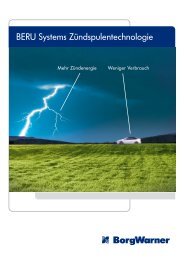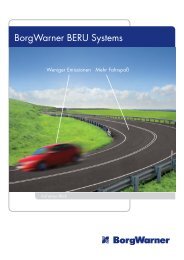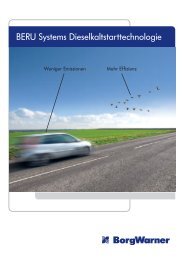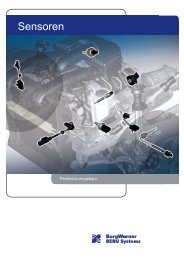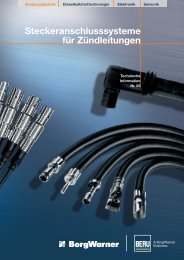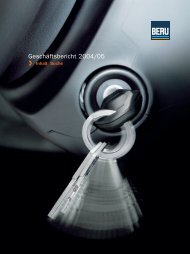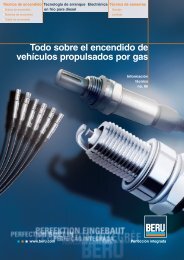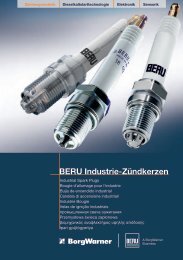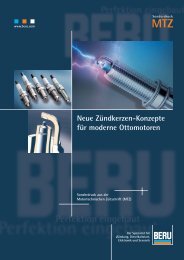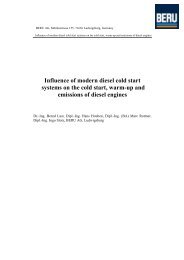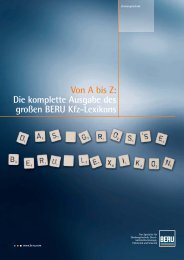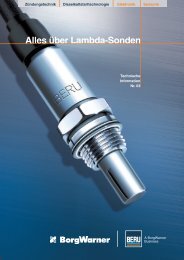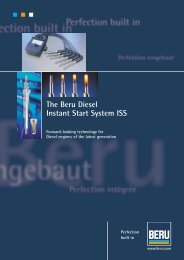WWW Entwicklungen Reifendruck - BorgWarner BERU Systems ...
WWW Entwicklungen Reifendruck - BorgWarner BERU Systems ...
WWW Entwicklungen Reifendruck - BorgWarner BERU Systems ...
You also want an ePaper? Increase the reach of your titles
YUMPU automatically turns print PDFs into web optimized ePapers that Google loves.
3 Functional Components<br />
TSS generation 2 without trigger TSS generation 2 with trigger TSS generation 3 without trigger,<br />
with compact control unit<br />
Figure 1: System description<br />
The components: wheel electronics (1), (digital) antenna (2), central control unit (3), trigger transmitter (4), compact control unit - control<br />
unit with integrated digital antenna (5)<br />
tegrated circuits. The first circuit draws on<br />
micro-mechanical structures in order to<br />
measure and digitise the values for pressure,<br />
temperature and acceleration. The value for<br />
acceleration is used as an ancillary factor. It<br />
recognizes whether the wheel is moving, so<br />
that the system can respond by switching to<br />
an aligned transmission mode.<br />
The second circuit contains a 433 MHz<br />
(or 315 MHz) transmission power stage to<br />
control the process. The transmission power<br />
is selected in such a way that the system<br />
is on the one hand suitable for certification<br />
ATZ 2/2005 Jahrgang 107<br />
under radio regulations, while on the other<br />
hand guaranteeing the greatest possible<br />
system reserves for operations.<br />
Another module wakes up the system<br />
when it receives a trigger signal of 125 kHz,<br />
thus setting it to an active mode.<br />
3.2 The Digital Antenna<br />
The digital antenna contains a 433 MHz (or<br />
315 MHz) RF receiver with corresponding demodulator<br />
and data decoder. The received<br />
measurement values are transmitted to the<br />
control unit via a LIN bus interface. The ad-<br />
vantage of this concept compared to previous<br />
systems is that no RF wiring is required<br />
in the vehicle to control the tire pressure,<br />
which considerably improves the impact of<br />
electro-mechanical interference. The receiver<br />
initially transforms the 433 MHz (or 315 MHz)<br />
signal to an intermediate frequency of 10.7<br />
MHz after preliminary filtering. This is then<br />
followed by demodulation, decoding and reformatting<br />
to the LIN protocol. The concept is<br />
designed in such a way that an adjustment<br />
of the RF circuits in series production is not<br />
necessary.<br />
5



